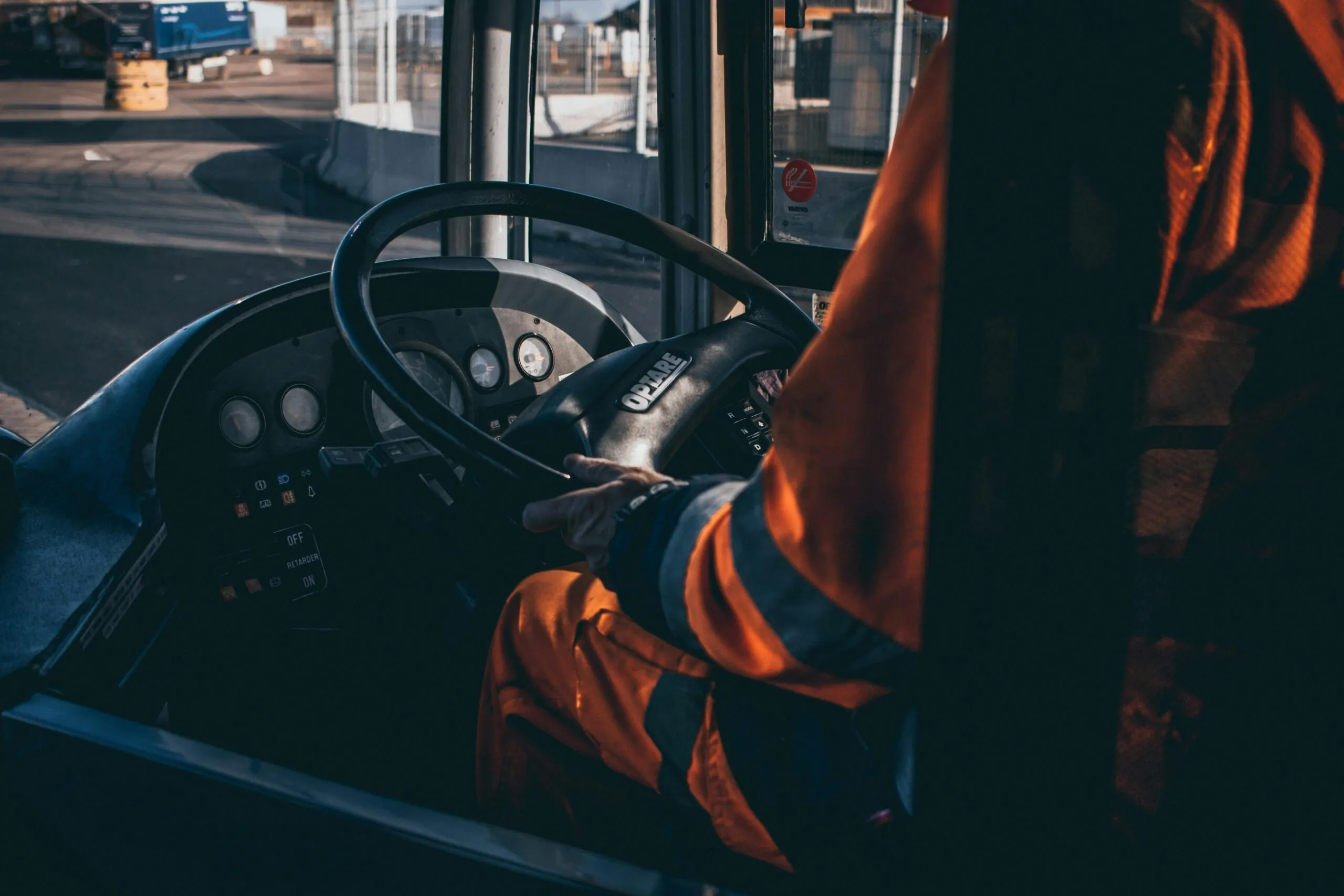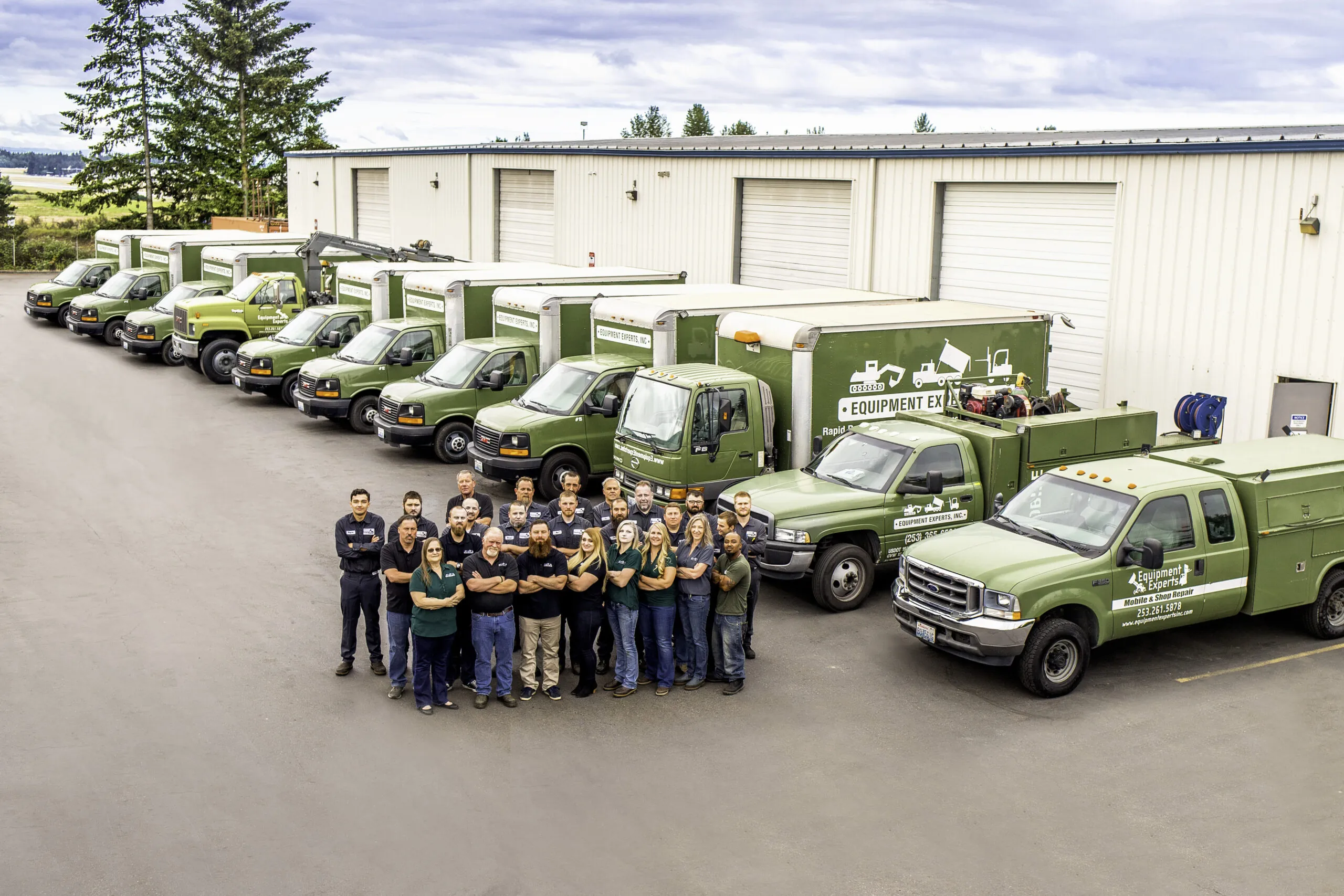
A forklift accident can cause serious damage. Without proper forklift training, forklifts can cause huge safety concerns. In addition, if you or your team aren’t aware of proper forklift safety, you could end up having more problems than you signed up for.
Wondering what all those levers and pedals are on your forklift? Need to know more about forklift controls to operate a forklift safely and keep your forklift in tip-top shape?
We’re Equipment Experts, Inc., a fleet and forklift repair services shop based out of beautiful Tacoma, Washington. For more than 20 years, our expert diesel repair technicians have been providing quality fleet and forklift repair services to hard-working people.
Forklift owners, operators, and managers: if you’re looking to better understand the controls of your forklift, this guide is for you. You’ll learn what you need to know about forklift controls to create a safe, healthy, and reliable operation.
Hop in. Let’s go for a ride down forklift lane.
A common question we receive from customers is, “Are all forklift controls built the same way?” Not quite.
Depending on the forklift, different forklifts have different controls. Knowing which type of forklift you’re operating will help you better understand the functions and utility of your control panel.
There are three main types of controls for forklifts. They include:
Let’s take a closer look at what makes each of these forklifts so special — and different from one another.
These types of forklifts are the types you often see in warehouses. Forklift operators sit down behind a steering wheel and use pedals and hydraulic controls with this forklift.
These forklifts are internal combustion-powered or electric-powered. Plus, they include a seat so drivers can sit and move as needed.
Stand-up forklifts are designed for handling goods that sit on racks. A stacking truck is an example of this special forklift.
Drivers use these forklifts to pick up and deliver materials from racks.
The forks of these forklifts hold a load that is then added to a rack. The joystick of the forklift also houses the controls.
Some of the controls featured include:
On a hand-controlled truck, forklift operators can find the controls on the truck’s tiller arm. Like a stand-up rider, you can find lifting and lowering hydraulic controls, an acceleration pedal, and an emergency stop button.
But, every forklift is different. Furthermore, the basic controls on a forklift won’t differ much between forklift models. We’ll discuss the most common forklift controls in our next section.
Knowing your forklift controls is helpful for two reasons:
Knowing your forklift controls is beneficial for two reasons:
Also, proper forklift safety is important, as the United States Department of Labor’s Occupational Safety and Health Administration (OSHA) requires fleet operators to comply with federal law. Even with OSHA’s laws, 7,290 forklift injuries occurred in 2020 alone, according to the National Safety Council.
All the more reason to know your controls.
To practice proper forklift safety, we recommend becoming familiar with the following controls:
Like a fleet truck, the steering wheel helps you drive to your destination. Depending on the forklift, the steering wheel is located in a different spot.
With a sit-down rider, the forklift is located in front of the operator. With a stand-up forklift, the wheel is located on the left panel and controlled by the operator’s left hand.
Finally, hand-controlled forklifts don’t come with steering wheels. Operators steer hand-controlled forklifts using a small tiller arm that extends from the base of the forklift.
Pop the key in, crank it, and watch your forklift come to life! That’s the power of the ignition.
The difference between the ignition of a forklift and a general fleet vehicle lies in the driver’s role. Let us explain.
But, different forklifts operate in different ways. Most sit-down forklifts include a turn-off seat switch. Stand-ups have a different set-up.
When this switch is on, the forklift won’t come to life if the forklift doesn’t have a driver seated and buckled in the front seat. The forklift turns on only if the driver is seated (In our opinion, that’s a pretty cool safety feature).
Joysticks are only found in stand-up forklifts. They’re one of the most important devices and parts of a forklift.
Joysticks house the forklift’s hydraulic controls and allow the operator to drive the forklift forward and back. Many forklift drivers enjoy having having both of these functions on a single handle.
We’ve found that one of the key indicators of a successful fleet management plan lies in whether your team goes easy on the brakes and gas. Instructing your fleet team about the pedals of a forklift can help ensure that accidents stay down, safety stays up, and other human metric-based KPIs stay in the green. The most common pedals you’ll see on your forklift include:
But, the typical forklift doesn’t include all of these pedals, though.
We’ll describe which pedals come with electric, internal combustion, and stand-up forklifts next.
First, electric forklifts tend to come with either two or three pedals. These forklifts have an acceleration pedal, service brake, and park brake.
Some forklifts even have a steering break to the left of the steering column. If your forklift has two or three pedals, it likely comes with an acceleration pedal and service brake.
An internal combustion, sit-down rider forklift often comes with an accelerator, service brake, inching pedal, and/or parking brake. Depending on if the forklift comes with a hand-operated park brake, the forklift may have three or four pedals total.
For stand-up forklifts, you’ll often see a variety of different pedal set-ups. And, whether you own a reach truck or order picker, your forklift may come with a deadman pedal, inching pedal, or pallet clamp control pedal.
By depressing a switch while at a complete stop, and before turning the forklift on, the deadman switch will shut down the forklift. Then, the forklift will turn off when the operator leaves the forklift compartment.
The inching pedal works very much like a clutch pedal like in a car. By pushing down the inching pedal, forklift operators can control how fast the forks will raise the load. Furthermore, depressing the pedal also helps operators make slight changes in the speed at which the forks raise or lower.
By pushing down on the pallet clamp pedal, you can detach the release clamp from the forklift to help lift the load you’re trying to lift.
We sometimes refer to forklift control levers as hydraulic lift knobs or controls. The forklift’s control levers help control the mast and other forklift attachments.
The most common levers on a forklift help clamp, lift and lower, tilt, and shift loads from side to side (and up and down). We’ll take a look at what each type of forklift’s control levers include.
Sit-down rider control levers tend to come in two different types of knob set-ups: a traditional stick-based knob and a mini, finger-based knob.
The main functions of each of these knobs are to lift and lower the forks, to move the masts forward or backward, and to move loads from side to side.
Some sit-down forklifts come with an additional two knobs that are used to open and close, rotate, and swing the clamp.
Furthermore, before operating levers, we recommend ensuring that all the parts of your forklift — tires, clamps, masts, and forks especially — are in working condition. Doing so will keep your operator safe and help you stay in control of your fleet operation.
Stand-up control levers don’t actually have levers. For example, the lift, lower, and tilt functions are found not on the control levers themselves but on small buttons on the joystick.
In addition, reach trucks also include an extend and retract function to help the forklift reach high-up and tight spaces. Order pickers include a lever that helps raise and lower the base of the forklift.
Hand-controlled forklifts operate much like an order picker: they raise and lower items.
The lever comes mounted on the tiller head of the pallet jack. The lever helps raise and lower the platform.
Where a basic forklift won’t fit, a walk-behind stacker forklift can be used. Stacker forklifts can often raise, lower, tilt, or even shift loads from side to side.
We recommend looking into order pickers, electric pallet jacks, and stacker forklifts for your business’ needs. Also, these forklifts make moving goods more convenient for operators with special needs.
Forklift drivers need to drive forward and backward in tight spaces. A forklift’s directional controls help the operator move the forklift where it needs to go. The three gears on a forklift include:
For stand-up forklifts, the forklift directional controls are located on the steering column and next to the hydraulic controls. Sometimes, the controls come as foot pedals.
Oftentimes, the gears are located next to the steering column (as a stickshift-like clutch) or on the side of the steering wheel (as a lever).
Stand-up forklifts’ directional controls are simpler. The drive, reverse, and neutral gears can be found on the forklift’s joystick.
Forklift operators simply grab the joystick and move it forward or backward to take the forklift in the direction of their choice.
Much like a motorcycle, hand-controlled forklifts move forward with a twist of the till.
Fortunately, the default position of a hand-controlled forklift is neutral. Therefore, you never have to worry about your forklift running away from you.
As we move away from how to drive a forklift, we’ll next discuss the basic forklift controls on the instrument panel.
You can think of the instrument panel as the directional controls’ sidekick. The instrument panel gives the operator data about the health of the functions of the forklift.
Some of the most common gauges on the instrument panel include:
No list of forklift control panels and lever controls would be complete without discussing the emergency stop button. Also, all forklifts are fitted with either an emergency stop switch or a button that makes the truck unusable if the button is depressed.
The emergency button shuts off the power in a forklift. This handy button can be useful if you make dangerous contact with an object that isn’t in your line of vision.

Ready to operate your forklift? Depending on the type of forklift, you’ll want to do your research before driving the forklift around.
We recommend reading the operator’s manual to familiarize yourself with all the bells and whistles of your trusted forklift. Also, doing so will ensure that your material handling operation goes off without a hitch.
Furthermore, if you’re wondering how to keep your forklift in tip-top shape, we recommend checking out our blog post on maintaining forklifts. It’s packed with helpful tips on creating a proper maintenance schedule, safely operating a forklift, and more.
But, if you don’t have much time to read, we totally understand.
And, if it’s more convenient, you’re more than welcome to email us at info@equipmentexpertsinc.com, call us at (253) 365-6591, or contact us on your own time. We’d be happy to help you with your forklift-related questions.
We look forward to providing you with expert guidance on your next forklift operation.
Did you know that Equipment Experts began in Stacy and Greg Conner’s garage in 2004? Subsequently, they then moved to a 3,500-square-foot 4-bay facility in Lakewood, WA in 2008.
The most common types of electric and internal combustion-powered forklifts include:
Of the different types of forklifts, the most common models of forklifts include:
The most essential forklift controls include:
These operator controls help you do everything from moving and tilting the forks to operating the forklift mast and height to driving a forklift forward and back.
In addition, some of the most common controls of a forklift include the following:
These pedals park the forklift and allow drivers to operate a forklift and operator to move it forward and in reverse.